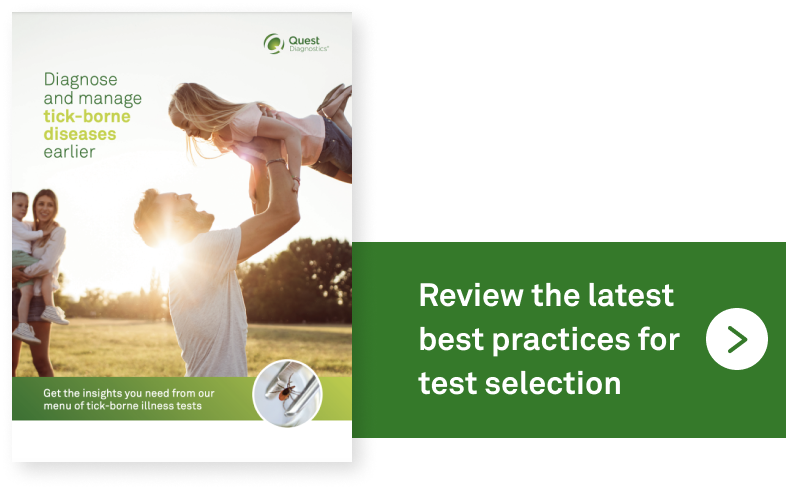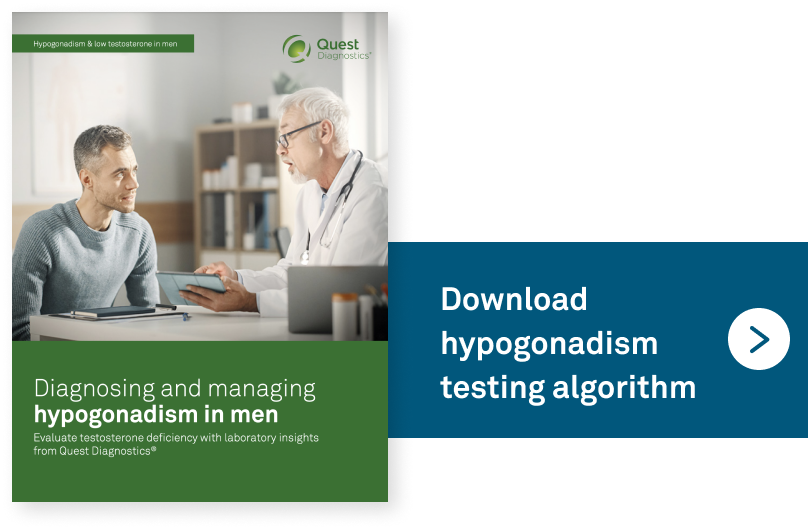June 2024

Discoveries, trends, and discussions in medical diagnostics
1) National Men’s Health Month
2) Diagnosing tick-borne diseases: Timing is everything
3) Best practices when testing for Novel Psychoactive Substances
4) Diagnosing and managing hypogonadism in men
5) The Longest Day®—shining a light on Alzheimer’s disease
6) Improve colorectal cancer screening compliance with InSure® ONE™
|
|
National Men’s Health Month |
|
|
National Men’s Health Month |
|
|
National Men’s Health Month |
National Men’s Health Month |
Encourage early detection and raise awareness of preventable health problems
Men ages 15-65 are significantly less likely than women to seek preventive care services.1
This National Men’s Health Month, we encourage men to take charge of their health and get the regular checkups they need. Several topics in this month’s edition are dedicated to health conditions that are prevalent in men. With screenings for heart disease, colorectal cancer, testosterone deficiency, cognitive health, and more, we are committed to helping men address health concerns at the earliest stages, when interventions are more likely to be successful.


|
Better outcomes |
Better outcomes |
Diagnosing tick-borne diseases: Timing is everything
Best practices when testing for Novel Psychoactive Substances
|
|
Be present in counterfeit drugs |
|
|
Be found in combination with other substances |
|
|
Cause more severe drug-to-drug interactions |
|
|
Be consumed unknowingly |

|
Better experiences |
Better experiences |
Diagnosing and managing hypogonadism in men
The Longest Day®—shining a light on diagnostic solutions to transform the Alzheimer's disease care pathway

|
Removing traditional barriers to testing |

|
Removing traditional barriers to testing |
Removing traditional barriers to testing |
Improve colorectal cancer screening compliance with InSure® ONE™
Achieving Quadruple Aim:
Quest supports you and your patients
About Diagnostics Dialogue
- Lifespan Health System. The importance of men’s health month. June 5, 2023. Accessed April 19, 2024. https://www.lifespan.org/lifespan-living/importance-mens-health-month
- Winny A. Tickborne diseases are on the rise—here’s what to know. Johns Hopkins Bloomberg School of Public Health. June 21, 2023. Accessed March 19, 2024. https://publichealth.jhu.edu/2023/lyme-disease-isnt-the-only-tickborne-disease-to-watch
- Lymedisease.org. About Lyme disease co-infections. Accessed March 19, 2024. https://www.lymedisease.org/lyme-basics/co-infections/about-co-infections/
- Iwersen-Bergmann S, Lehmann S, Heinemann A, et al. Mass poisoning with NPS: 2C-E and Bromo-DragonFly. Int J Legal Med. 2019;133(1):123-129. doi:10.1007/s00414-018-1882-9
- Peacock A, Bruno R, Gisev N, et al. New psychoactive substances: challenges for drug surveillance, control, and public health responses. Lancet. 2019;394(10209):1668-1684. doi:10.1016/s0140-6736(19)32231-7
- Bhasin S, Brito JP, Cunningham GR, et al. Testosterone therapy in men with hypogonadism: an Endocrine Society clinical practice guideline. J Clin Endocrinol Metab. 2018;103(5):1715-1744. doi:10.1210/jc.2018-00229
- Endocrine Society. Hypogonadism in men. January 24, 2022. Accessed February 8, 2024. https://www.endocrine.org/patient-engagement/endocrine-library/hypogonadism
- Bhasin S, Cunningham GR, Hayes FJ, et al. Testosterone therapy in men with androgen deficiency syndromes: an Endocrine Society clinical practice guideline. J Clin Endocrinol Metab. 2010;95(6):2536-2559. doi:10.1210/jc.2009-2354
- CDC. HoSt/VDSCP certified participants. Testosterone in serum; 2023. Accessed April 4, 2024. https://www.cdc.gov/clinical-standardization-programs/media/pdfs/2024/04/CDC-Certified-Testosterone-Assays-508.pdf
- Thijssen EH, Joie RL, Strom A, et al. Plasma phosphorylated tau 217 and phosphorylated tau 181 as biomarkers in Alzheimer’s disease and frontotemporal lobar degeneration: a retrospective diagnostic performance study. Lancet Neurol. 2021;20(9):739-752. doi:10.1016/s1474-4422(21)00214-3
- Palmqvist S, Janelidze S, Quiroz YT, et al. Discriminative accuracy of plasma phospho-tau217 for Alzheimer disease vs other neurodegenerative disorders. JAMA. 2020;324(8):772-781. doi:10.1001/jama.2020.12134
- Ashton NJ, Brum WS, Molfetta GD, et al. Diagnostic accuracy of a plasma phosphorylated tau 217 immunoassay for Alzheimer disease pathology. JAMA Neurol. 2024;81(3):255-263. doi:10.1001/jamaneurol.2023.5319
- American Cancer Society. Key statistics for colorectal cancer screening. January 29, 2024. Accessed April 23, 2024. https://www.cancer.org/cancer/types/colon-rectal-cancer/about/key-statistics.html
- NIH National Cancer Institute. Cancer trends progress report. Colorectal cancer screening. March 2024. Accessed April 23, 2024. https://progressreport.cancer.gov/detection/colorectal_cancer






